8 Reasons Art Makes You Smarter
Art is not about “what you see but what it makes others see” ~ Edgar Degas
New York Times, “How Art Makes You Smart”

New York Times, “How Art Makes You Smart”
You are probably wondering why on earth “making others see” something is that important. Well, if you are a parent or teacher, or even a boss leading a young team for that matter, “making others see” is the only way to grow—be it a business or a child into an adult. The human mind is intended to find creative solutions to all sorts of problems. From learning to walk across a room to touch something shiny or to helping a customer find the perfect pair of shoes for their new job: Everything in life presents a problem that needs some kind of solution. Since Degas lived long before the Internet of things, perhaps he was outdated in his thinking. Or was he?
Enter the IPhone
Today we have the most remarkable digital tools at our fingertips to answer anything, at any moment, with laser sharp accuracy. We now have Siri or Google’s Alexa to give us the answers we need, when we need them but is that really going to make us smarter? And not just book smart smarter, but real life “better problem solvers” smarter?
Bill Gates and Steve Jobs gave us the personal computer to make our lives easier and more productive. It was intended to make us efficient, not smarter. So why do we think that giving our children tablets or “Alexa” that we are bettering their lives? Sure, we are speeding up their lives and making it far more entertaining, but are we giving them the tools they need to become smarter, more productive individuals? And what if machines do give us all the solutions to math, science, and engineering, can it really be very helpful when it comes to designing innovative new products or choosing the right spouse?

Introduction of the IPhone
If you look at some of the truly great product innovations of the 20th Century, yes, even including the IPhone, you will see that these creations were usually presented after something else failed to solve a problem. In fact, many times, the resulting innovation came about as some kind of an accident that failed miserably. [Steve Jobs was obsessed with making the IPod more versatile for users, only those turn around dials were not useful for combining it with a device that we could touch. Ask anyone at Apple during the secret years of creating the IPhone and you will see that the process was completely painful and went into a direction not originally intended. The IPhone was an answer, a reluctant and painful answer, to keeping music front and center in the lives of customers. The phone part was an added misery that just happened to pay off and change the entire way we communicate, years ahead of its time, by accident.
Design Matters

As digital devices have filled our lives, becoming smaller, lighter, and easier, we as a society have become more design oriented in our thinking. The technology is important, but the design of things is what drives us to toss out something six months old and replace it for the new. How things look matter to us in a world where data is bombarding our every waking moment. It can’t just be useful, it has to be well-designed and containing attributes that make us feel one way or another. A Harley is a motorcycle, right? Or is it? Those rugged chrome curves are telling everyone that this rider is a rebel of sorts. It isn’t just transportation anymore, it is how things make us feel that matter.
Re-Enter Art
It used to be that teaching children how to draw and paint was part of childhood. Along with skinned knees, covering leaves with brightly colored paint and then stamping them onto crisp white sheets of paper became a rite of passage when returning to school after the long hot summer. Children had sketchpads, colored pencils and crayons in their rooms—and they were shaved down to bottom, rarely new in the box as they are today lying dormant next to coloring books that are rarely used. Creating art has become something “boring” to do when compared with Candy Crush. But all that “boring stuff” of childhood, from days-gone-by, are the elements of truly great American Innovation.

The world of texting
Ask any child psychologist today what they worry about most with the “digital generation” and they will tell you that it is the nuances of our relationships that cannot be understood with emojis replacing our actual human interactions. We humans need to experience actual experiences in order to really integrate them into our lives. Just
picking up that colored pencil and pushing it across the pages of a coloring book actually have a deep correlation to our memory and learning.
Yes, just looking at art can actually change how we think and behave.
So, let’s jump right into the Eight Reasons Art Makes You Smarter.
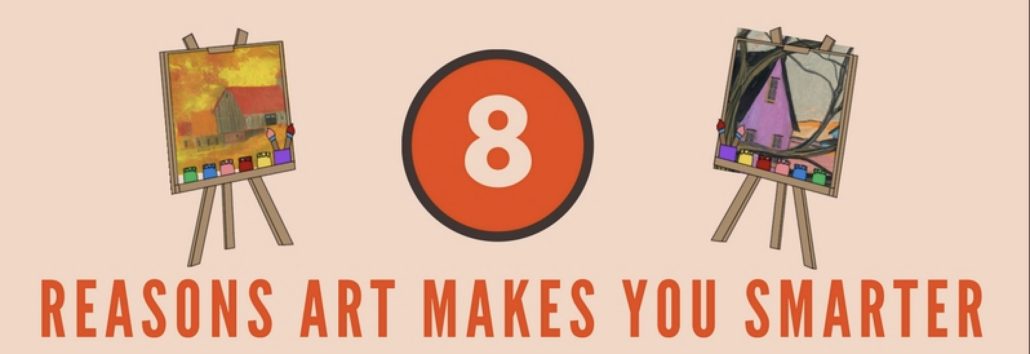
Here is a Simple Infographic to summarize the importance of Art [link]

Art Heightens Our Brain Activity. What researchers know is that when we make our brains work harder on things that they are not familiar with—like learning a new language or really scrutinizing the strokes and colors of a piece of art to see if its fake—our brains light up with energy and life giving food that it needs to stay healthy and strong so that we can live a long life of remembering things.

Art Exercises Our Survival Instincts. And who really cares about “Fight or Flight” anymore? We don’t have saber tooth tigers creeping up behind us in a cave, so what does it really matter that art makes those impulses stronger? Well think of your children in the play park for a moment. Someone comes up to them they do not know and starts a conversation that just might lead to a trip to their car. With all the digital confusion that movies and games fill our lives with, how is a child to know what real fear feels like? Art is one of those mediums that is “real” and deeply involved. It is also a place to share and learn without feeling like you are lecturing all the time. Art evokes questions because it cannot be swiped off the page or “x’d” out when it isn’t interesting anymore. Art is something to see and feel.

Art Develops Core Skills in Children. I do not think there is a teacher on the planet that would argue that holding a pencil and moving it along a surface isn’t a key element of learning to function as a child. Scientists can show you exact connections between holding that pencil and the regions of the brain that are activated by pressing it against the paper. A child must work through how to adequately hold a pencil properly in order to make it work as intended. That takes skills that turn us into productive adults one day. Taking away our ability to hold these tools in our hands and create works of art—as we intend them to look—removes a key process from our childhood. [The same goes for adults too! Just getting all the notes via PDF is not the same as taking notes– and studies are pretty clear that our ability to doodle is the brains way of resolving complex problems in our lives.] Art helps all of us develop core skills.

Art Enhances Well Being. If you have ever had the privilege to go to a Veterans Administration Art Therapy class you will see how incredibly powerful the process of art can transform a person’s stress level into the direction of peace. Our brains are a complex and very misunderstood part of our bodies. Since we only use a small portion of our brains and are just now understanding how this magnificent organ works, how can we doubt the power of art upon the complex thoughts and experiences we have? Our eyes capture trillions of pieces of data and color every single second and sitting down to draw a fruit bowl with its difficult shapes and intricate colors is one way to calm our thoughts and focus them on the task at hand—healing ourselves. Just see what happens when you ask a toddler in a rage to color. Sure, at first those crayons may end up as collateral damage, but if you make that part of the process of being stressed out, eventually they will find a way to express their frustration in ways that their language ability and maturity cannot.

Art Makes You More Attentive. Number 5 is following the art therapy because it is all about habit and process. The more children are exposed to art and participate in activities in it, the more they focus on it and other things that need to be learned and seen. TV, digital games, IPhone videos are all moving quickly, feeding our attention span and reducing it to what scientists say is now only a mere 6 seconds! And that goes for all of us. If we are not entertained in six seconds we switch or click out in boredom. I know you have all seen the one-year-old child trying to swipe at a magazine page. Funny as it was there is a lesson for all of us in it. Being able to hold our attention on things that matter in life will make us more successful no matter what our age. Appreciating art, with all its silence and space is just one really fun way to do that hard task.

Art Helps You See The World Differently. There is this really cool brain doctor in Southern California named Dr. Amen. He does brain imaging so many light years into the future that someday we will use the color mapping of our brains to help us become better adults. But for now, just know that when our brains are activated by something – a thought, an image, a smell, our brains have corresponding areas that light up and become stronger, improving whatever part of our body that this portion of the brain controls. Experiencing art is like having your brain go to the gym, only there is no sweating and puffing involved. Art give us just incredible images to activate our memories or thoughts, and help us to see the world differently.

Art Increases Your Creativity. Many years ago, I brought my two young children into the London Museum of Art. We entered a large gallery that had a painting covering most of the wall on the backside of the room. It was absolutely huge as paintings go, so of course it was the very first thing noticed as you entered. I can only imagine how large it was for a 4 and 5-year-old child. But what was even more extraordinary for them was this very large, naked man happened to bear a striking resemblance to someone that was near and dear to their hearts: Santa Clause.
Well, as you can only imagine, they broke free from our hands and ran right up to the painting laughing and shouting, “Santa Clause is naked.” In our embarrassment, we hurried out of the gallery and went back outside into the cold where a very interesting discussion about how Santa Clause took baths took place. They were very curious if it was possible for him to stay warm in the bathroom at the North Pole while he was in the tub. On the surface it was an insignificant, albeit an embarrassing adult event, but for our children, they often referred to Santa while taking future baths realigning their behavior in that moment just in case he was paying attention with the “naughty and nice list.”

Art Helps Us Find Meaning. I don’t think anyone can doubt the phrase “beauty is in the eye of the beholder.” What our eyes see and how our brains and personal experiences interpret that “seeing” is something that is uniquely special to the viewer. Children are viewing movies, cartoons, and video games and subconsciously finding meaning in their own lives every day. They view their parents sitting at dinner with their phones in hand and even a small infant begins to understand that this small container of light is something very, very valuable: even more valuable than their gurgling sounds many times.
Our world contains many beautiful images that make us feel one way or another. Art is one of those experiences that can make you squirm, or laugh, or feel sad when it reminds you of something from a long
time ago. Adding up all the reasons here that art makes us smarter people, why wouldn’t we want to share it with our children every day?
Within one piece of art above the kitchen table can be a story of childhood, or a history lesson, or the process of how eggs get into the cartons at Trader Joes. There can be discussions on colors and moments of clarity about how a person really feels about something or someone. Art is intended to make us think and feel and now you know that it also has the wonderful benefit of helping to making us smarter too.
So, find a piece of art in this special This Great America Summer of Art Collection and write out your favorite summer memory. Share it with your family, and then share it with us for a chance to win a very special limited edition Giclee print of the Barnstormer, painted by American Artist, P. Buckley Moss. Learn how to enter here. And if you don’t know what a ‘Barnstormer” is then click here to learn more about their wonderful history and adventure.
Blogger and Digital Marketer, Maria Bereket works with all types of businesses to help them bridge the gap of Digital Social Media Marketing. She has had the pleasure of working with the art dealers of American Artist, P. Buckley Moss and often incorporates the important lessons educators and psychologists on the importance of art in development of children’s creativity and intelligence. ”Just viewing art can have an important effect on creativity and attention of both children and adults.” Says Bereket. “Studies show that sharing art and just hanging it in our homes can have a profound effect on innovation.” Her company, Design Bear Marketing values education and innovation in all things digital and marketing. Connect with her on Twitter @mbear88 or Website

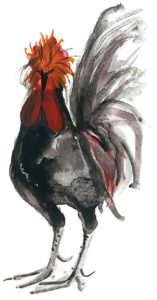




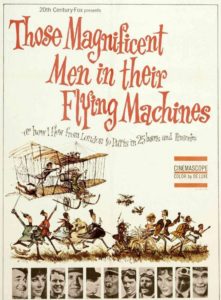

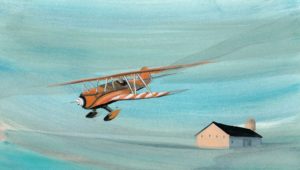
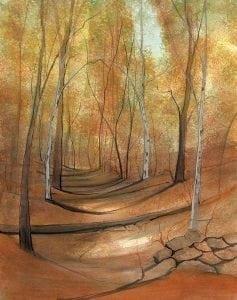

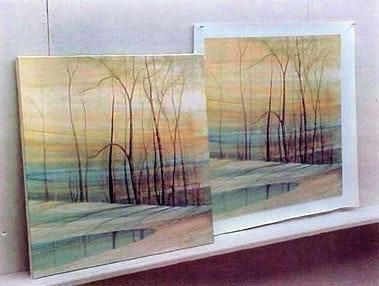
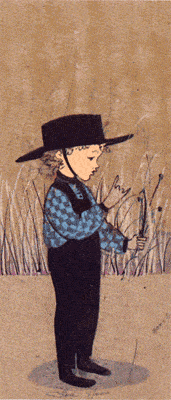
 An Artist’s Proof is just that: an image made for the artist by the printer. AP’s, Artist Proofs, are usually produced in smaller numbers than the general edition, are marked as AP’s, and may be signed and numbered as well. Because the number of Artist Proofs is smaller and because the APs are “closer to the artist’s hand,” signed APs tend to be more valuable than the prints of a signed and numbered limited edition.
An Artist’s Proof is just that: an image made for the artist by the printer. AP’s, Artist Proofs, are usually produced in smaller numbers than the general edition, are marked as AP’s, and may be signed and numbered as well. Because the number of Artist Proofs is smaller and because the APs are “closer to the artist’s hand,” signed APs tend to be more valuable than the prints of a signed and numbered limited edition.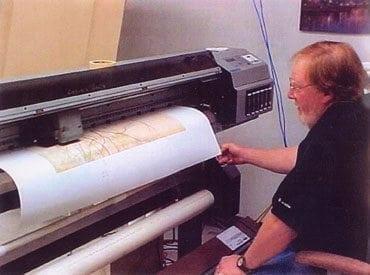
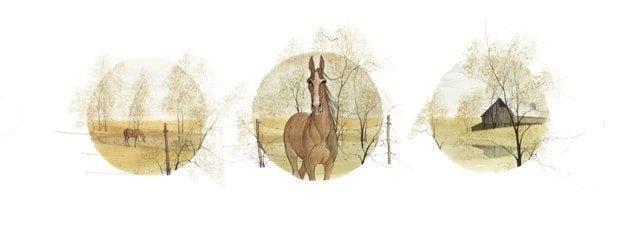

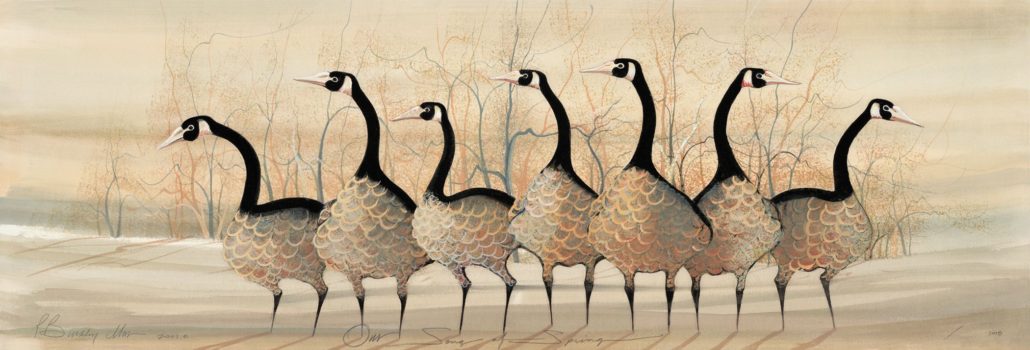
 In the early days of printing, prints could vary a bit from one print to the next but even when most of the P Buckley Moss print editions were printed as offset lithographs, or photographic reproductions of the original watercolor, the images didn’t vary and each print of the edition looked the same. Now, in the digital age, all but the oversized images by Moss are printed as giclee editions; a process of reproduction of the original watercolor using software and state of the art printers that produce more vivid colors, which make for amazingly detailed and vibrant prints.
In the early days of printing, prints could vary a bit from one print to the next but even when most of the P Buckley Moss print editions were printed as offset lithographs, or photographic reproductions of the original watercolor, the images didn’t vary and each print of the edition looked the same. Now, in the digital age, all but the oversized images by Moss are printed as giclee editions; a process of reproduction of the original watercolor using software and state of the art printers that produce more vivid colors, which make for amazingly detailed and vibrant prints.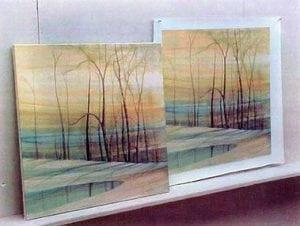
 Canada Goose Gallery offers a mix of etchings, offset lithographs, original art and giclee limited edition reproductions that are of the highest quality and value, made in America exclusively by the artist's family. We have artist signed pieces and numbered limited editions that will not only refresh your spaces, but also bring value to the art you purchase at all price levels for every shopper's tastes and budgets. And, every piece we deliver to you will include a certificate of authenticity that can be placed on the back after framing ensuring that you have chosen a special and valuable piece of art to inspire your home or office.
Canada Goose Gallery offers a mix of etchings, offset lithographs, original art and giclee limited edition reproductions that are of the highest quality and value, made in America exclusively by the artist's family. We have artist signed pieces and numbered limited editions that will not only refresh your spaces, but also bring value to the art you purchase at all price levels for every shopper's tastes and budgets. And, every piece we deliver to you will include a certificate of authenticity that can be placed on the back after framing ensuring that you have chosen a special and valuable piece of art to inspire your home or office. 